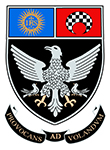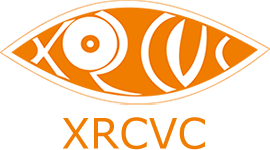
Reading and Writing Math with Assistive Technologies
Introduction
Mathematics being both visual and abstract in nature becomes a challenging subject for students with blindness and low vision to master. Technological advancement and digital-based learning allow more options to read and write mathematics in an accessible way.
We believe that independent reading and writing is the key to learning any subject, while also being an essential element of education. This is true more so with Mathematics, which requires practice and solving multiple sums—of increasing complexity—to get a thorough understanding of the mathematical concept. Even though one can obtain arithmetic skills solely through repetitive and sufficient oral practice, the logic and reasoning of the steps in Mathematics and learning to present them in that manner can best be grasped when written out.
This document is designed to orient the reader to the diverse options available for students with blindness and low vision to read and write Mathematical and Scientific notations independently.
It is not meant to be a detailed tutor. The user is expected to utilize the specific instructional manuals of the software/applications to learn their specific use.
Writing Options
*Important Note: Latest versions of the software allow better accessibility features for reading and writing.
Depending on the student's current method of reading and writing of other subjects, there are multiple options to choose from; all these options have their advantages and disadvantages. The same is listed below, along with a note stating the user profile it best serves and the software requirements.
1. Linear Math
Writing using this method is done with the ‘Math Autocorrect’ option on Microsoft Word and/or spelling out the symbol names. Math is, therefore, here, read and written in a linear format.
For example; will be written as (a+b)/c
Software requirements:
- Screen reader: NVDA 2020.2 or later, or JAWS 2018 or later, or SuperNova Magnifier & Screen Reader 20.05,
- any version of Microsoft Word
Advantages:
- It does not require any additional software installation.
Disadvantages:
- 2D/Spatial arrangement of math expressions is not possible.
- One has to memorize the code for reading; as math reading is not as per mathematical notations.
For example; Fractions are read as ‘ a slash b’ instead of reading as ‘a over b’ or ‘fraction with numerator a over b.’
Most useful for:
- School students in earlier grades
- Students who find learning LaTeX complex.
2. Microsoft Insert Equation on Windows
Writing with this method is done using ‘Microsoft Insert Equation Editor’. The input for math expressions is LaTeX code or Unicode.
Software requirements:
- Screen reader: JAWS 2020 or later, NVDA 2020.3 or later with 'Microsoft UI Automation’ setting changed to ‘Use UI Automation to access Microsoft Word document controls when available in advanced settings,’ or SuperNova Magnifier & Screen Reader 20.05
- Word 2019 or later/Office 365, and
- Microsoft Insert Equation, (in-built in Microsoft Word).
Advantages:
- It does not require any additional software installation.
- It is possible to write mathematics across all grades.
- Represents spatial mathematics.
Disadvantages:
- Requires the latest version of Microsoft Word.
- Advanced settings on NVDA can cause NVDA to function incorrectly.
Most useful for:
- High school students who need to write spatial math and complex equation.
- JAWS user
3. MathType
Writing using this method is done with LaTeX code for Math expressions and conversion using MathType in Microsoft Word.
Software requirements:
- Screen reader: NVDA 2019.2 and later, or JAWS 2020 and later,
*Note: NVDA versions below 2020.4 require the use of MathPlayer for accessible reading and writing of math expressions.
- Microsoft Word 2016 or later,
- MathType, and
- Mathplayer or Access8Math add-on for NVDA.
Advantages:
- It is possible to write mathematics across all grades.
- Writing spatial mathematics.
- Various speech settings are available for mathematical expressions with MathPlayer.
Disadvantages:
- MathType is a paid software and needs an annual subscription.
- Large files become heavy to load.
- Updates in Microsoft Word cause errors while installation-reinstallation.
- Behaviour differs depending on the system.
Most useful for:
- NVDA user
- Students in Grade 6 or later
4. Microsoft Word with Pandoc Conversion
Writing using this method involves LaTeX code for Math expressions in Microsoft Word and then conversion to MathML using Pandoc through command prompt.
Software requirements:
- Screen reader: NVDA 2019.2 or later, or JAWS 2018 or later, or SuperNova Magnifier & Screen Reader 20.05,
- any version of Microsoft Word,
- nvMathViewer screen reader add-on,
- Pandoc, and
- MathJax Local Copy.
Advantages:
- It is possible to write all higher-grade mathematics.
- No extra paid software is needed.
Disadvantages:
- User needs to be mindful of file formatting.
Most useful for:
- Higher grade students; where sighted students also use TeX as a method of writing.
5. LaTeX+TeX in TeX Editor
Writing using this method involves LaTeX code for Math expressions with TeX code for text editing in TeX editor, and later, conversion to MathML using Pandoc through command prompt.
Software requirements:
- Screen reader: NVDA 2019.2 and later, or JAWS 2018 and later,
- TeX editor Notepad++,
- nvMathViewer screen reader add-on,
- Pandoc, and
- MathJax Local Copy.
Advantages:
- Reading and writing all higher-grade mathematics is possible.
Disadvantages:
- Use of TeX coding for all formatting.
Most useful for:
- Higher grade students; where sighted students also use TeX as a method of writing.
*Note: MathJax local copy is helpful for offline reading of MathML files.
6. Microsoft Word with Insert Equation on Android/iOS
Writing using this method is done with ‘Microsoft Insert Equation Editor’. The input for math expressions is Unicode.
Software requirements:
- Screen reader: TalkBack or VoiceOver
- Microsoft Word for android, or Microsoft Word for iOS and
Advantages:
- It is not necessary to have a computer/laptop for reading and writing math.
- It is possible to write mathematics across all grades.
- Represents spatial mathematics.
Disadvantages:
- Typing with a touch screen keyboard becomes difficult.
- There are some bugs—for example; TalkBack not being able to read the deleted characters, making it a cumbersome task.
Most useful for:
- Students who do not have access to a computer/laptop.
- High school students who need to write spatial math and complex equation.
*Note: We strongly suggest using an external keyboard (wired or Bluetooth) if possible
Reading options
1. Microsoft Word
- with Microsoft Insert Equations and Screen Readers (Windows, Android, iOS, MacOS):
- Microsoft Word latest version, and
- JAWS 2019 and later, or NVDA 2020.3 and later with advanced settings, or SuperNova Magnifier & Screen Reader 20.05, or TalkBack, or VoiceOver.
- Microsoft Word document created with Microsoft Insert Equations is accessible with VoiceOver in Pages on iOS/MacOS.
- with MathType Equations and Screen Readers:
*Note: MathType 6.9 used to support reading in Microsoft Word versions 2007 and later in lite mode (non-licensed), MathType 7 and later does not provide this support.
2. MathML
MathML is a markup language designed for describing mathematical notations and capturing both its structure and content on the Web and in other formats such as EPUB.
- Browser and Screen Readers:
- Firefox supports MathML natively and with MathJax
- Google Chrome supports MathML linked with MathJax
- Safari supports MathML natively and with MathJax
- JAWS 2020 and later, or NVDA 2019.2 and later, or SuperNova Magnifier & Screen Reader 20.05
- VoiceOver on iOS can read limited MathML.
3. EPUB
EPUB is an e-book file format that uses the ".epub" file extension.
- EPUB Reading Systems and Screen Readers (for Windows):
- Thorium Reader latest version.
- VitalSource Bookshelf Windows PC latest version.
- NVDA 2019.2 and later or JAWS 2020 and later, or SuperNova Magnifier & Screen Reader 20.05
- EPUB Reading Systems and Screen Readers (for Android/iOS)):
4. Refreshable Braille Display:
A refreshable braille display is an electro-mechanical device for displaying characters, usually by means of round-tipped pins raised through holes in a flat surface. Visually impaired computer users who cannot use a standard computer monitor can use it to read text output. Deafblind computer users may also use refreshable braille displays. (Source: Wikipedia)
Refreshable braille displays like Braille Me, Focus 40, and Orbit Reader 20 read Microsoft Word documents containing Math equations inserted using MathType, MathML, and EPUB. However, each has varied support for mathematical expressions, as follows;
- Orbit Reader 20
- In Microsoft Word:
- with NVDA advanced settings enabled, it recognises math expressions typed using Microsoft Insert Equation and displays it as alt text.
- With NVDA and MathPlayer, it recognises math expressions typed using MathType and displays it as Nemeth code.
*Note: There are other Braille options available in MathPlayer Braille settings as Marburg, UKMaths, and Woluwe, which are not being tested.
- with JAWS, it recognises math expressions typed using Microsoft Insert Equation and MathType both, and displays it as Nemeth code.
- In MathML:
- It recognises math expressions. NVDA and JAWS displays as alt text.
- In EPUB:
- It recognises math expressions. NVDA and JAWS displays as alt text.
- In Microsoft Word:
- Focus 40
- In Microsoft Word:
- It recognises math expressions typed using Microsoft Insert Equation, needs grade 2 Braille to be selected for reading.
*Note: Accuracy of grade 2 Braille is not tested.
- It recognises math expressions typed using Microsoft Insert Equation, needs grade 2 Braille to be selected for reading.
- In MathML:
- It recognises math expressions. NVDA and JAWS displays as alt text.
- In EPUB:
- It recognises math expressions. NVDA and JAWS displays as alt text.
*Note: Focus 40 used for the testing is 4th generation device. There might be any further improvements in the latest builds of these devices.
- It recognises math expressions. NVDA and JAWS displays as alt text.
- In Microsoft Word:
Reading and Writing Math in Indian Language
Reading and writing Math in Indian languages (Marathi and Hindi) is possible through some of the solutions given in the following table;
| Writing Option | Support for Hindi | Support for Marathi |
|
Yes | Yes |
|
Yes | Yes |
|
Yes | Yes |
|
Yes | Yes |
|
No | No |
|
Yes | Yes |
| Reading Options | Support for Hindi | Support for Marathi |
|
Yes | Yes |
|
Yes | Yes |
|
Yes | Yes |
|
Yes | Yes |
*Note 1: Depending on the screen reader’s support for other languages, it might support reading and writing mathematics in those languages. However, that has not been tested during this testing. One can explore these options in other languages.
*Note 2: JAWS reads some of the expressions oddly, for example; ± is read as palus and maynus.
System and software used for testing:
- Windows 10 and 11,
- Android 11,
- iOS 15.1,
- MacOS Big Sur 11.4,
- Microsoft Word 2007, 2010, 2013, 2016, 2019, and Office 365,
- Microsoft Word for Android (version 16.0.14729.20146),
- Microsoft Word for iOS (version 2.56),
- Notepad++ v7.8 and later,
- NVDA 2019.2 to 2021.3.1,
- JAWS 2018 to 2022,
- Dolphin SuperNova Magnifier & Screen Reader 19.05 to 20.05,
- TalkBack latest version,
- VoiceOver,
- Google Chrome, Firefox, and Microsoft Edge,
- Thorium reader v1.7.3,
- VitalSource Bookshelf 10.0.1 (10.0.65.0),
- Bookshelf for Android (version 10.0.6),
- Bookshelf for iOS (version 10.0.4),
- Braille Me,
- rbit Reader 20,
- Focus40.
Upcoming Technologies
MathCAT: Math Capable Assistive Technology
MathCAT is a library that supports conversion of MathML to:
- Speech strings with embedded speech engine commands
- Braille (Nemeth and eventually other braille math codes)
- Navigation of math (in multiple ways) including overview
Read more at: MathCAT
Date Created: 20th January 2022
This resource is compiled by the XRCVC team. Please feel free to reach out to us with any queries or/and questions.
Contact us:
Poonam Deokar
Dr. Sam Taraporevala










